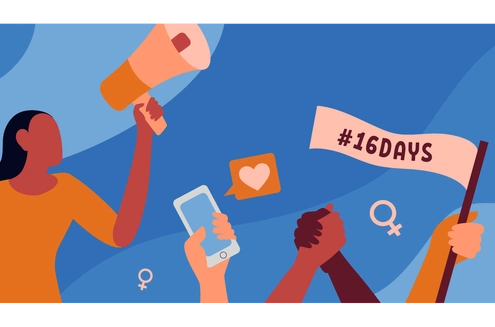Global Torture Index: Data Transparency and the Documentation of Torture and Ill-treatment

On 13 February, 2025, over 100 SOS-Torture network members and partners joined OMCT’s Global Torture Index Webinar to share experiences from its pilot phase and discuss the next steps leading to its global launch in June 2025. The Torture Index reviews States’ compliance with the highest international standards on torture and ill-treatment providing a comprehensive assessment by scrutinising laws, policies, and their actual implementation, yearly in every country.
The webinar brought together key civil society organisations to discuss effective strategies for enhancing transparency and fostering greater access to information at the national level. Participants shared good practices on submitting access-to-information requests related to torture and ill-treatment, with the collective aim of creating an advocacy roadmap to improve information accessibility and push for State compliance of this right.
The Index serves as a tool for identifying data gaps by highlighting the (un)availability of information across specific countries, both in the absence of a specific legislation and in the lack of availability, in practice, of data regarding number of cases of torture and investigations, protocols used by law enforcement, type of weapons used, oversight mechanisms in public offices, among others.
The democratic health of a country can be measured by its transparency, through public authorities making information publicly available and the number of independent bodies that ensuring appropriate access to this information. Open data is a very powerful tool to have an informed society and to mobilise the public when it is adequately communicated and understood.
Addressing Critical Questions
Why is access to information important while working against torture?
Protecting the right of access to information is vital for ensuring the transparency and accountability of public institutions. This right empowers civil society organisations, journalists, and individuals to scrutinise the conduct of public bodies, expose human rights violations, and foster informed public debate. It enhances participation in decision-making and strengthens the democratic process. Access to information also empowers citizens and human rights defenders to safeguard rights and prevent abuses. By enabling vulnerable groups to exercise their rights more effectively, it becomes a vehicle for promoting equality and justice.
By accessing data on torture and ill-treatment, civil society can identify patterns of violations, groups and contexts most affected as a prevention tool, type of weapons and/or techniques that are causing more harm so as to revise laws, and protocols on the use of force and their implementation by law enforcement officials. We can also understand how the justice system is dealing with the investigation and trials of cases of torture and ill-treatment, with a focus on groups such as women and children, as well as identifying if victims’ redress is adequate.
Every State has the obligation to fulfil the right to information by producing and regularly publishing statistical information that would enable the general public, civil society organisations and human rights defenders to:
- Hold human rights violations and perpetrators to account
- Formulate, add weight and evidence in submissions and human rights claims, for example, to submissions to UN and regional human rights mechanisms, to provide context data.
- Publish and analyse statistics without fear of reprisal
- Measure and demonstrate human rights issues and identify trends.
- Track progress and/or regression, including early warning.
- Advocate for the compliance with international human rights and statistical standards, including the United Nations Principles for Official Statistics, for their data collection, storage and dissemination of statistical information and analysis.
How does the lack of access to data hinder the implementation of the Index?
During the webinar, the lack of access to information regarding torture and ill-treatment was identified as a global challenge, affecting every country included in the pilot phase. From the initial 21 implementing countries, 13 have stated that the State has enacted national legislation on the right of access to information. However, only three of them stated that this right is actually implemented.
In many countries, even if a law on access to information exists, it fails to meet international standards by including overly broad or vaguely framed exemptions to information disclosure, not being accessible in all languages, lacking disaggregated data, and having inadequate or non-existent appeals and independent oversight mechanisms. In practice, there are also barriers to effectively accessing information, such as inadequate resources and training for public officials who handle information requests and delayed and incomplete public information releases.
Data gaps and inadequate definitions of torture, ill-treatment and other human rights violations in line with international standards, prevent the Index from fully reflecting specific challenges, risk factors, trends in the analysed countries as they are frequently hidden. This situation poses a big challenge and hampers the completeness of results, elaboration of tailored advocacy strategies and the identification of trends.
How should access-to-information requests be structured for maximum effectiveness?
Several factors must be considered when requesting public data, especially related to torture. It is first essential to consider the definition of torture managed by the entity from which the data is obtained. National definitions often differ with the UN Convention Against Torture’s. It is also advisable to expand the search, for example to other types of crimes under which torture is sometimes investigated (such as abuse of power). It is key to make periodic access to information requests, even about periods already consulted, because information may change due to updates in the data systems or even to a lack of systematicity and transparency in information management.
What approaches can civil society organisations and human rights defenders take, either if the country has access to information law or not?
- Engage/liaise with the national statistics office of your country or the relevant institution/s in charge of data collection.
- Liaise with organisations specialised in transparency and the right of access to information in your country.
- Engage with your networks on the importance of transparency and access to data, as well as with the media and on social media.
- Seek meetings with governmental institutions to stress the importance of transparency and the negative impacts of not having access to data.
- Engaging with international bodies specialised in torture and access to information, in particular with the UN Committee against Torture, in the context of State reviews, and the Subcommittee on Prevention of Torture, when State has ratified the Optional Protocol to the Convention Against Torture (OPCAT).
- Monitor developments and reactions in your country. Do not hesitate to share such reactions with the OMCT Secretariat by emailing tortureindex@omct.org.
Tags
Related resources
-
- 01.04.25
- Statements
 Read more
Read moreInternational Donors: Secure Support for the Fight Against Torture




